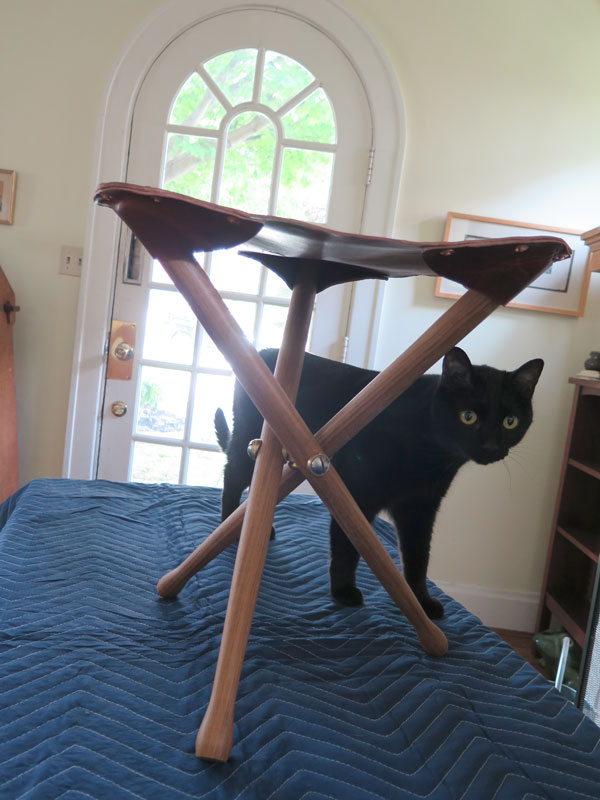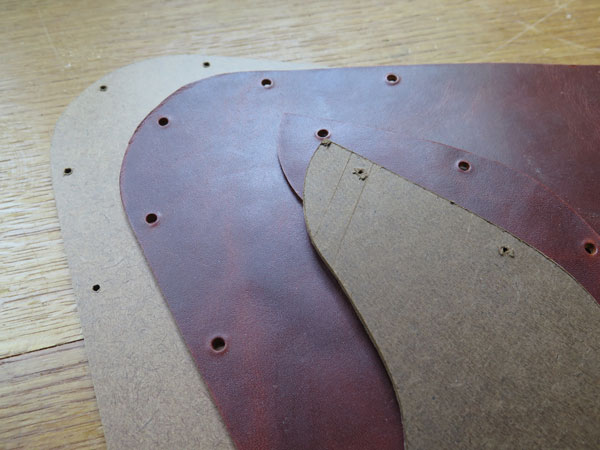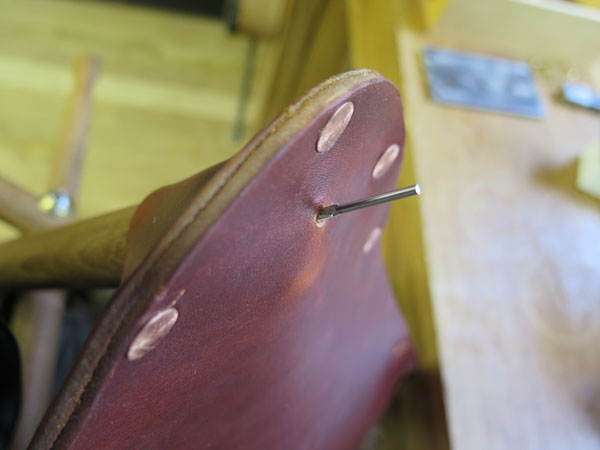We may receive a commission when you use our affiliate links. However, this does not impact our recommendations.
The most difficult part of making a folding camp stool (for woodworkers) is the leather or fabric seat. Getting the right shape for the seat and the three pockets for the legs has vexed many people who aren’t accustomed to a material that bends with hand pressure.
These patterns are based on a few years of refinement, and they aren’t perfect in any way. So if you do find an easier way to create them, we are all listening.
This seat is for a typical stool with 24”-long legs that are hinged at 12”. I’m using the new Lee Valley hardware for campaign stools, which is fantastic. But you can make the tri-bolt yourself using hardware-store bolts, eye-bolts and lock nuts.
The Seat Pattern
The seat pattern is a 100-percent scale photo of one-third of the seat. Print this out three times, glue them down to a piece of Masonite so they form the triangular seat shape. The holes on the pattern are where the rivet holes go in the material. Be sure to transfer those to the Masonite and drill those out.
Cut the pattern to shape and smooth the edges.
The Pockets
Like the seat pattern, the scan for the pocket pattern is a 100-percent scale photo that includes the locations for the rivets, which will match up with the rivet hole pattern in the seat. Make one pattern from Masonite.
Place the patterns on your material and slice things out. Punch out the holes for the rivets. Rivet the pockets to the seat.
I usually fasten the seat to the three legs with screws. But getting the screws through the leather and into the pilot hole in the legs can be tricky. Here’s how I handle it: I drill the pilot holes in the legs and punch a clearance hole in the leather.
Then I remove the drill bit from the chuck and push it into the pilot hole in the end of one of the legs. I thread the drill bit into the hole in the leather and hold everything tight as I pull out the drill bit. Then I quickly push the screw through the leather and into the pilot hole.
It’s easier than it sounds.
— Christopher Schwarz
Here are some supplies and tools we find essential in our everyday work around the shop. We may receive a commission from sales referred by our links; however, we have carefully selected these products for their usefulness and quality.












I see the shape towards the base of the stool. Is there a significant reason for this?
I did a bit more investigating of the scalability issue and discovered that if you uncheck the “fit to paper size” option, the pocket pattern, comes out properly sized. Since both patterns print simultaneously, print one set as “Fit to paper size” and another without that feature used; then cut out the larger seat pattern (actually three of these) and the smaller “lips” pattern, you will have a set in which the rivet holes align.
The pocket patterns are not to scale with the seat if printed 100%. The pocket holes are further apart than the seat holes. I have made this stool before and the original “lips” pattern was much smaller. I don’t have scalability on my printer, but I would guess the pocket pattern is at least 20% too large. The seat looks fine. I found your original seat pattern to be rather small for an adult male. Perhaps this is a printer scale problem. It might be helpful to include an inch scale with images.
Thanks for providing your ongoing support for making campaign furniture.
Just trying to get a grasp on the size, I looked at the PDF and it seem a bit confusing on the total size. perhaps from pocket to pocket? just it’s length in inches.
TY!
What are the benefits of attaching the legs to the seat (as shown here) vs. the pocket (as shown in your book)?
Screws into end grain? On a weather exposed construction? Hmm. I’m thinking a brass or copper tack or two into the pocket underneath would be better. I mean, unless I’m totally off base.
Chris, thanks for the updated patterns. Would you also be willing to summarize your current leather preferences for stools and chairs?